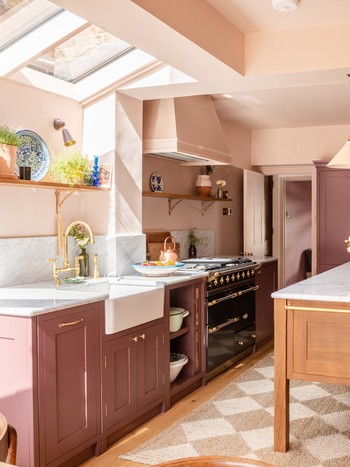Find Long Lasting and Ornamental Legs For Kitchen Island Transformations
Find Long Lasting and Ornamental Legs For Kitchen Island Transformations
Blog Article
Important Factors to Take Into Consideration When Choosing Legs For Kitchen Area Island
Choosing the suitable legs for a kitchen area island entails a careful evaluation of numerous factors that can substantially affect both functionality and aesthetic charm. As we discover these elements, it becomes clear that each choice can have far-ranging implications for the overall kitchen area experience.
Product Options
When picking legs for a kitchen island, comprehending the different product alternatives is essential for accomplishing both aesthetic charm and architectural honesty (Legs For Kitchen Island). The choice of material considerably influences not only the toughness of the island yet additionally its overall design and functionality
Steel legs, typically made from stainless steel or wrought iron, contribute a modern and commercial feel while ensuring longevity and security. These materials are resistant to put on and can sustain considerable weight, making them perfect for larger islands.
An additional choice is engineered products, like MDF or plywood, which can be a lot more economical while still providing a variety of coatings. Nevertheless, they may not give the exact same level of security as solid timber or metal. Materials such as acrylic or glass can develop a contemporary appearance, though they may call for additional assistance to guarantee security.
Ultimately, the option of material for cooking area island legs ought to straighten with the preferred capability and the general motif of the kitchen.
Design And Style

When thinking about style, the shape and coating of the legs are critical. Conical legs can give a feeling of lightness and beauty, while thicker, much more robust legs can convey toughness and security. Furthermore, the finish-- be it repainted, tarnished, or all-natural-- ought to complement the kitchen cabinetry and kitchen counter products to create a unified look.
In addition, the style of the legs can likewise reflect individual taste. Custom or attractive legs, such as those including elaborate makings or special geometric shapes, can act as centerpieces, adding personality and personality to the cooking area. Eventually, the best selection will certainly not only boost functionality yet likewise elevate the visual appeal, making the cooking area island a standout function of the home.
Elevation Considerations
Picking the proper height for kitchen area island legs is essential, as it straight impacts both capability and comfort. The typical height for a cooking area island usually varies from 36 to 42 inches, lining up with usual countertop elevations. A 36-inch height is optimal for cooking and cooking, permitting for comfortable use cooking area home appliances and devices. Conversely, a height of 42 inches is usually chosen for islands meant for bar seating, suiting taller feceses and providing an informal eating experience.

It is also important to account for customers' heights and preferences. Tailoring the elevation can make sure a comfortable experience for all relative, making the kitchen island an extra satisfying and useful room.
Weight Assistance
Ensuring appropriate weight support for kitchen area island legs is vital for both security and capability. The kitchen island usually serves several objectives, including cooking, eating, and additional storage, demanding a durable support structure. When choosing legs, it is crucial to think about the general weight ability required based upon the island's planned use and the materials that will be put on it.
The selection of material for the legs plays a significant function in their weight-bearing abilities. Strong timber, steel, and heavy-duty composites normally give superior strength compared to lighter link materials. Furthermore, the style of the legs-- whether they are directly, tapered, or have a pedestal kind-- can affect their capacity to disperse weight effectively across the structure.
Always speak with the manufacturer's specifications pertaining to lots limitations to guarantee that the legs can sustain the desired weight without jeopardizing security. In recap, picking kitchen area island legs with sufficient weight assistance is necessary for producing a safe and useful cooking area.
Installation and Upkeep
Appropriate installation and upkeep of kitchen island legs are essential for pop over here making sure durability and security. To begin, it is essential to adhere to the producer's standards during installment. This often entails securing the legs to the space station using ideal fasteners, making certain that the legs are level and straightened. Utilizing a degree device can assist protect against wobbling and improve the overall aesthetic allure of the kitchen island.
As soon as set up, routine upkeep is necessary to maintain the stability and appearance of the legs - Legs For Kitchen Island. For wooden legs, regular cleansing with a damp fabric and application of appropriate timber gloss can prevent wetness damages and keep their coating. Metal legs may need a mild cleansing remedy to remove grease and gunk, complied with by a completely dry towel to avoid rust formation
Additionally, inspect the legs frequently for indications of wear or damage, such as fractures or loose joints. Tightening screws or screws as required can additionally lengthen the life expectancy of the legs. By sticking to these setup and maintenance practices, homeowners can ensure that their cooking area island continues to be strong and aesthetically appealing for many years to come.
Conclusion

Visual comprehensibility is extremely important in picking the design and layout of legs for a cooking area island, as these components greatly influence the overall ambiance of the space. Conical legs can provide a feeling of agility and style, while thicker, extra durable legs can share toughness and security.Selecting the proper height for kitchen area island legs is important, as it directly impacts both functionality and comfort. In recap, picking kitchen area island legs with appropriate weight support is important for creating a useful and risk-free culinary space.
In verdict, picking legs for a kitchen area island requires careful factor to find out here now consider of different elements, including material options, design, elevation, weight support, and installment.
Report this page